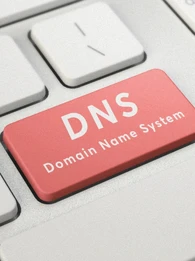
After several years of taking a conservative approach to blockchain technology use in the enterprise, executives are turning a corner. Despite a number of historically valid reservations created by, for example, a lack of standards, leaders to varying degrees are ready to invest in blockchain-based experiments, prototypes, pilots, and even develop production solutions.
Understanding the Value of Blockchain
Organizations are beginning to see a lot of value in the unique qualities of blockchain technology to enhance their internal processes and to deliver better services to their customers. These leaders also recognize that blockchain technology may be required due to demands from the marketplace. For example, if you’re a bank, you’ve got to decide whether you’re going to support cryptocurrencies.
Now that organizations are moving forward, they’ve still got some hurdles to overcome.
Lack of Skills
One glaring challenge is ensuring the right skills are available. Of course, many businesses will engage a third-party business to assist, but there is a lot of value in having full-time staff leading and maintaining efforts. The availability of qualified talent is in short supply. It’s a great market for people with expert skills in blockchain technology, but it’s a challenge for internal recruiters who are tasked with sourcing the best talent.
Organizations may find it beneficial to train existing staff by investing in their skills development. This can be an excellent route to take, as it demonstrates an organization’s willingness to invest in their own people. There are a growing number of avenues to acquire skills as the training marketplace for blockchain heats up.
Progress Can Mean Obsolescence
Organizations will need to recognize that the advantages of blockchain may result in making some of their services and market value obsolete. While this is a feature of a lot of innovation and should drive a business to anticipate market and technological-driven change and evolve accordingly, it can, in the short term, be a source of significant anxiety.
For example, if an organization demonstrates value through forms of intermediary services, blockchain solutions can make those intermediaries obsolete. Peer-to-peer and smart contract-driven processes means skipping human-based facilitation services. Some new technology-centric mortgage offerings, for example, already demonstrate that many human services are no longer required in their value chain.
Absence of Interoperability and Standards
When blockchain solutions are being adopted, plugging the technology into an existing environment still has a high level of complexity and risk associated with it. For example, a decentralized proof-of-work system may need to coexist and interact with one or more centralized multi-tier systems, both inside and outside an organization.
It may also need to work with other blockchain systems that aren’t yet standardized for interoperability. It’s not impossible, of course, but it’s certainly not easy, and there are risks in relying on these heterogeneous environments to provide the kind of reliability we’ve come to expect in centralized tech. Arguably we have no choice. Contemporary information technology architecture is almost heterogeneous by definition.
Many Challenges But a Lot of Optimism
An enterprise taking the positive leap into blockchain territory will do so knowing that there are still insufficient regulations, many trust concerns, and a lot of risk in both the maturity of the technology and the cybersecurity vulnerabilities. These are not showstoppers, but they will shape how an enterprise might think about the blockchain solutions it pursues.
The Greatest Risk of All
Perhaps the greatest risk is doing nothing. For an enterprise, this is always a choice. Faced with an array of legitimate concerns in a technology still emerging, it could be tempting to kick the can down the road. The spirit and intent to pursue blockchain may exist, but the commitment to invest and take some balanced risks may not.
Some industries will be able to delay their efforts, or perhaps continue to just remain in the experimental phase of blockchain exploration for some time. But others, such as those in the financial sector, supply chain, government, healthcare, and the internet-of-things space, will find that delaying their efforts or only proceeding tentatively may backfire badly.
Today, in the opening decades of the 21st century, taking risks, embracing uncertainty, and making bets on where the market is going is just the nature of business. Those that are agile, that make informed choices, and get a bit of luck along the way may well end up reaping the biggest rewards.












